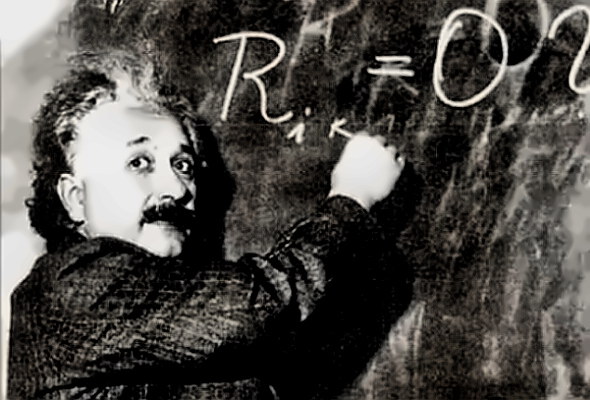How do I make Einstein write on the chalkboard?
What is Einstein's blackboard?
What is the significance of the writing on the blackboard?
Physicist. Einstein’s blackboard was used in a lecture in Oxford on 16 May 1931. At that time Einstein’s theories of relativity were being combined with astronomical data to explain the shifts towards the red in the spectra of distant galaxies, which indicated that the universe was expanding. In his lecture Einstein outlined a fairly simple model to explain this apparent …
Can I place my own text in this Einstein image?
Feb 18, 2022 · The meme is basically an exploitable photograph of world-renowned theoretical physicist, Albert Einstein, writing on a chalkboard wherein which the shooper … Photo montage Text on blackboard with Albert Einstein – Pixiz https://en.pixiz.com/template/Text-on-blackboard-with-Albert-Einstein-3014 You will receive the new photo montages each week.

Where is Einstein's blackboard?
Einstein's Blackboard. Einstein's Blackboard at the Museum of the History of Science in Oxford. Einstein's Blackboard is a blackboard which physicist Albert Einstein (1879–1955) used on 16 May 1931 during his lectures while visiting the University of Oxford in England. The blackboard is in the collection of the Museum of the History ...
What was Einstein's first lecture?
Einstein's first lecture was on relativity, the second on cosmology, and the third on unified field theory. All the lectures were delivered in German. A brief report of the second lecture was given in The Times and in Nature.
What is the significance of the Friedmann-Einstein universe?
The paper, known as the Friedmann–Einstein universe, is of historic significance because it constituted the first scientific publication in which Einstein embraced the possibility of a cosmos of time-varying radius. In the paper, Einstein adopts Alexander Friedman's 1922 analysis of relativistic models of a universe of time-varying radius and positive curvature, but sets the cosmological constant to zero, declaring it redundant, predicting a universe that expands and contracts over time. (The work is sometimes known as the Friedmann–Einstein model of the universe ). With the use of Edwin Hubble's observations of a linear redshift/distance relation for the spiral nebulae, Einstein extracts from his model estimates of ρ ~ 10 −26 g/cm 3, P ~ 10 8 light-years and t ~ 10 10 years for the density of matter, the radius of the cosmos and the timespan of the cosmic expansion respectively. These values are displayed in the last three lines on the Oxford blackboard (although the units of measurement are not specifically stated for the density estimate, cgs units are implied by the other calculations).

Popular Posts:
- 1. usc blackboard notification alerts
- 2. blackboard calu \
- 3. where is "about this course" in blackboard
- 4. virtual blackboard khan academy\
- 5. blackboard connect website
- 6. how to find course content folder on blackboard
- 7. how to change video background on blackboard collaborate
- 8. how to add category gradebook blackboard
- 9. why can i not paste in a blackboard discussion post
- 10. how to calibrate blackboard boogie board